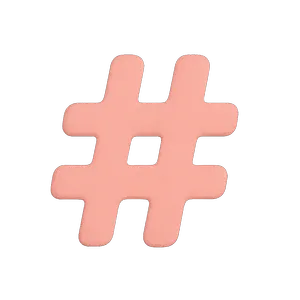Artificial Intelligence (AI) has revolutionized various industries, and the art world is no exception. With AI-powered algorithms, artists and creators have found a new and exciting way to express themselves through AI portraits. These masterpieces are not only visually stunning but also raise fascinating questions about the intersection of technology and creativity. In this article, we will dive into the world of AI portraits, exploring the role of AI in art, the evolution of AI portraits, the process behind creating them, their impact on the art world, and the critiques and controversies surrounding AI art.

Understanding AI and Its Role in Art
AI, in its simplest form, refers to the ability of machines to perform tasks that usually require human intelligence. In the context of art, AI can analyze and interpret data to create unique and captivating artworks. This blending of technology and art opens up a world of possibilities, allowing artists to explore new mediums and concepts.
Artificial intelligence has revolutionized the art world, providing artists with powerful tools to enhance their creativity and push the boundaries of traditional art forms. By harnessing the capabilities of AI, artists can delve into uncharted territories, discovering innovative ways to express their ideas and emotions.
One fascinating aspect of AI in art is its ability to analyze vast amounts of data. By feeding AI algorithms with historical art pieces, contemporary photographs, and even scientific data, artists can gain valuable insights and inspiration. This data-driven approach enables artists to create compositions that not only mimic the style of famous artists but also embody specific themes, evoking emotions and sparking meaningful conversations.
Defining AI in the Context of Art
When we talk about AI in art, we are referring to the use of algorithms and machine learning models to generate or enhance artworks. These algorithms can analyze vast amounts of data, ranging from historical art pieces to contemporary photographs, and create original compositions that mimic the style of famous artists or embody specific themes.
AI algorithms can learn from a wide range of artistic styles, from the intricate brushstrokes of the Renaissance masters to the bold and abstract forms of contemporary art. By studying these diverse styles, AI can generate new artworks that blend elements from different periods, creating a fusion of artistic traditions that captivates viewers.
Moreover, AI can also assist artists in the creative process by providing suggestions and generating alternative ideas. Artists can collaborate with AI algorithms, exploring different artistic possibilities and experimenting with unconventional techniques. This collaboration between human creativity and machine intelligence can lead to groundbreaking artworks that challenge our perception of art itself.

The Intersection of Technology and Creativity
The fusion of technology and creativity is not new. Throughout history, artists have utilized various tools and techniques to bring their imagination to life. From the invention of perspective in the Renaissance to the advent of photography in the 19th century, artists have always embraced technological advancements to expand their artistic horizons.
AI represents the next frontier in this journey, offering a fresh canvas for artistic expression. By incorporating AI into their creative process, artists can push the boundaries of what was once thought possible, unlocking new artistic paths. They can explore the unexplored, challenge conventions, and create art that transcends traditional mediums.
Furthermore, AI can also act as a source of inspiration for artists. By analyzing vast amounts of data, AI algorithms can identify patterns, trends, and connections that may go unnoticed by human observers. This newfound knowledge can spark creative ideas and ignite the artist's imagination, leading to the creation of thought-provoking and visually stunning artworks.
In conclusion, the integration of AI in art opens up a realm of endless possibilities. It allows artists to tap into the vast potential of technology, expanding their creative toolbox and redefining the boundaries of artistic expression. As AI continues to evolve, we can only anticipate even more groundbreaking collaborations between human artists and intelligent machines, shaping the future of art in ways we have yet to imagine.
The Evolution of AI Portraits
The roots of AI in art can be traced back to early experiments in computer-generated art. However, the concept of AI portraits as we know them today emerged in recent years, driven by advancements in machine learning and deep neural networks.
As technology advanced, so did the capabilities of AI in the art world. The early beginnings of AI in art focused on creating basic visuals or replicating existing artworks. These initial forays provided a foundation for further exploration, allowing artists to understand the possibilities and limitations of AI-generated art.
Artists and developers began to experiment with different algorithms and techniques to push the boundaries of AI-generated portraits. They trained AI models to analyze facial features, emotions, and artistic styles, resulting in the creation of realistic and mesmerizing portraits. The level of realism achieved by these AI portraits has not only captivated art enthusiasts but has also found practical applications in various business domains.

The Early Beginnings of AI in Art
Early experiments with AI in art were met with both excitement and skepticism. Artists and researchers were eager to explore the potential of AI as a creative tool, while others questioned the authenticity and artistic value of machine-generated art.
During this period, AI-generated art primarily focused on creating basic visuals or replicating existing artworks. These early AI systems were limited in their capabilities, often producing simplistic and abstract compositions. However, they laid the groundwork for future advancements, providing valuable insights into the potential of AI in the art world.
One notable early experiment in AI-generated art was the creation of a computer program called AARON. Developed by artist Harold Cohen in the 1970s, AARON was designed to autonomously create original artworks. The program used a set of rules and algorithms to generate abstract compositions, showcasing the potential of AI as a creative tool.
Another significant development in the early days of AI in art was the use of neural networks. Neural networks, inspired by the structure of the human brain, allowed AI systems to learn and adapt based on input data. This breakthrough opened up new possibilities for AI-generated art, enabling machines to analyze and replicate artistic styles.

Modern Developments in AI Portraiture
Today, AI portraits have reached new heights of sophistication. Artists and developers have harnessed the power of machine learning and deep neural networks to create portraits that are indistinguishable from those painted by human artists.
By training AI models on vast datasets of facial images, these systems can analyze facial features, emotions, and artistic styles to generate highly realistic portraits. The AI algorithms can capture subtle details, such as the play of light and shadow on the subject's face, resulting in portraits that are visually stunning and emotionally evocative.
The advancements in AI portraiture have not only revolutionized the art world but have also found practical applications in various industries. For example, personalized marketing campaigns can now utilize AI-generated portraits to create targeted advertisements that resonate with individual consumers. Virtual showroom experiences have also been enhanced by AI, allowing customers to visualize how products would look in their own homes.
As AI continues to evolve, the possibilities for AI-generated art are endless. Artists and researchers are constantly pushing the boundaries of what is possible, exploring new techniques and algorithms to create art that challenges our perception of creativity and human expression.
The Process Behind Creating AI Portraits
Creating AI portraits involves a delicate balance between algorithms and the human touch. While technology plays a crucial role in generating the visuals, human artists bring their expertise and creativity to make the AI-generated portraits truly unique.
The Role of Algorithms in AI Art
Algorithms analyze vast amounts of data to extract patterns, understand artistic styles, and generate original compositions. These algorithms can be trained on extensive datasets or even learn directly from interacting with human artists. They become tools in the hands of creators, aiding and inspiring them in the artistic journey.
The Human Touch in AI Portraits
Despite the involvement of algorithms, the human touch remains vital in creating AI portraits. Artists have the ability to guide the AI models, shaping the final artwork and infusing it with their own style and emotions. The collaboration between human artists and AI algorithms is a true testament to the potential of merging human ingenuity with technological capabilities.
AI Portraits for Events
In the world of events, AI has introduced a drastic new shift for the ever-popular photo booth - taking it from a fun novelty to a branded content-generation machine. By leveraging the latest generative AI, an AI photo booth can now transform a user's photo (captured like normal) into an infinite number of new styles, designs, and scenes based on that unique person. It opens up a whole new world of customization for brands to harness creating completely novel, engaging experiences.
Learn more about Snapshot AI, the 1st AI Photo Booth.
The Impact of AI Portraits on the Art World
AI portraits have sparked a profound shift in how art is perceived and experienced. They have challenged conventional notions of artistry and originality while influencing the art market and the way art is exhibited and consumed.

Shifting Perspectives on Art and Originality
AI portraits blur the boundaries between human creativity and machine-generated art. They invite viewers to question traditional definitions of originality and authorship while celebrating the collaborative nature of AI-generated artworks. This shift in perspective prompts new discussions within the art community and creates exciting opportunities for artists and collectors alike.
AI Portraits and the Future of Art Galleries
The emergence of AI portraits has also impacted the way art is exhibited and experienced. Virtual and augmented reality technologies enable immersive art experiences, allowing art galleries to showcase AI-generated art alongside traditional masterpieces. These technological advancements have the potential to democratize art, making it more accessible to a broader audience and redefining the role of physical galleries in the digital age.
Critiques and Controversies Surrounding AI Art
While AI art has garnered praise and attention, it has also raised important critiques and controversies that cannot be ignored. These debates revolve around questions of authenticity, creativity, and ethical considerations.
The Debate Over Authenticity and Creativity
Some critics argue that AI-generated art lacks the authenticity and emotional depth of human-created art. They question the creative process itself, asserting that true artistry is uniquely human. On the other hand, proponents of AI art argue that the collaboration between human artists and AI algorithms should be celebrated, as it can lead to groundbreaking creations that challenge our perception of what art can be.
Ethical Considerations in AI Art Creation
AI art creation raises ethical questions regarding ownership, data usage, and the boundaries of artistic inspiration. Issues such as copyright infringement, data privacy, and fair compensation for artists need to be carefully addressed to ensure the responsible and sustainable growth of AI-generated art.
In conclusion, AI portraits represent an exciting convergence of art and technology. They challenge traditional notions of creativity and provide a fresh perspective on the artistic process. While debates surrounding AI art continue to unfold, it is clear that this emerging form of artistic expression has the power to reshape the art world for years to come.










-p-500.webp)



.jpeg)















